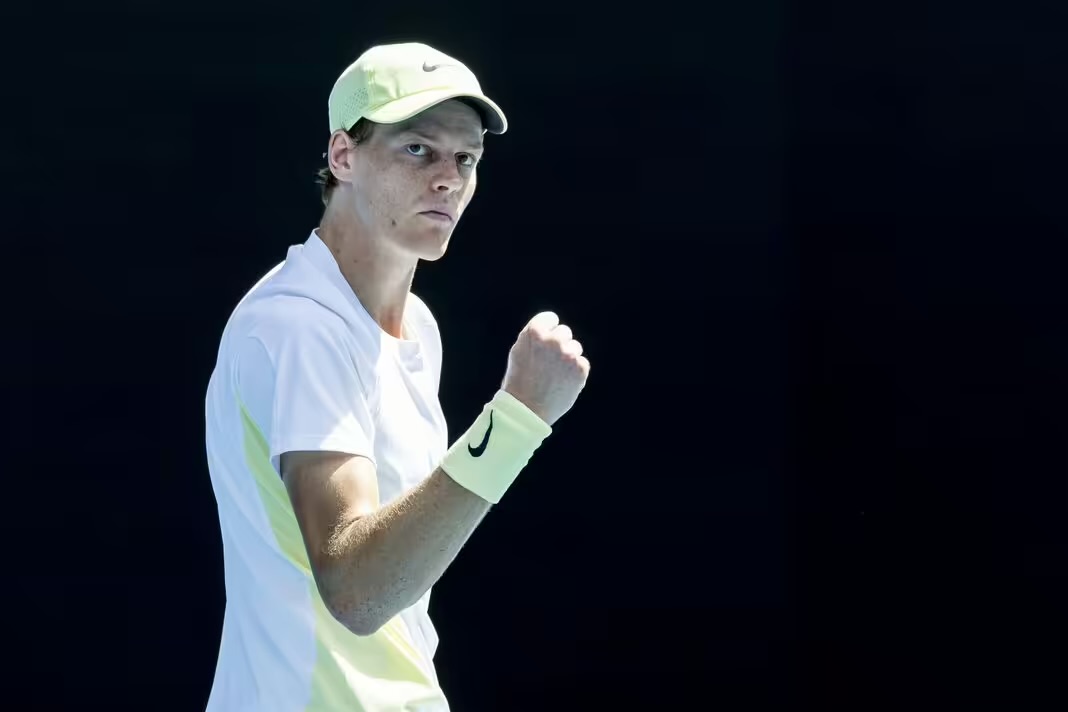The world of professional tennis has long been a subject of scrutiny when it comes to issues of doping and fair play. As global sporting standards evolve, so too does the desire to maintain the integrity of these competitions, ensuring athletes are competing on a level playing field. Recently, one of the sport’s rising stars, Italian tennis player Jannik Sinner, has found himself at the center of a major controversy as the Court of Arbitration for Sport (CAS) investigates potential anti-doping violations.
The investigation into Sinner’s case has brought attention not only to his individual situation but also to the broader context of how anti-doping regulations are applied to different players across the world. An intriguing remark from an anti-doping chief about comparing Sinner’s case to “the Chinese cases” has sparked a range of discussions, raising questions about the nuances of anti-doping enforcement and the potential biases inherent in the system.
### The Context: Jannik Sinner’s Rise and the Doping Allegations
Jannik Sinner has been making waves in the tennis world for several years. At just 22 years old, the Italian has already achieved significant success, including multiple ATP titles and a breakthrough quarterfinal appearance at Wimbledon in 2021. With a solid blend of athleticism, mental fortitude, and determination, Sinner is considered one of the brightest young talents in the sport.
However, recent events have cast a shadow over his promising career. A few months ago, a report surfaced that the CAS had opened an investigation into a potential doping violation involving Sinner. This move triggered widespread media attention, with fans and analysts questioning whether Sinner had fallen foul of anti-doping rules. Despite the fact that Sinner has publicly maintained his innocence, and there has been no official announcement of any breach, the investigation has created an air of uncertainty surrounding his future in the sport.
As is typical in such cases, the CAS operates under a veil of confidentiality, meaning details of the investigation are not readily available. The only official statement from Sinner’s camp has been a declaration of his commitment to maintaining a clean sport and his confidence that the investigation will ultimately clear his name.
### The Anti-Doping Chief’s Remarks
In the midst of the ongoing investigation, an anti-doping chief made headlines by comparing Sinner’s case to “the Chinese cases,” a reference to a group of Chinese athletes who have been at the center of doping-related controversies in recent years. This comparison sparked immediate debate within the tennis world and beyond, with critics questioning the appropriateness of such a comparison and what it says about the way anti-doping cases are handled in different regions.
The “Chinese cases” likely refer to several high-profile doping scandals involving Chinese athletes across various sports. In particular, China’s track and field athletes have faced accusations of doping violations over the past few decades, resulting in a reputation for state-sponsored doping programs. While these cases have been heavily scrutinized, the perception remains that Chinese athletes may face harsher treatment or greater suspicion from international sporting bodies due to the country’s history with doping.
The anti-doping chief’s comment could be interpreted as a subtle jab at the scrutiny faced by Chinese athletes in comparison to those from other countries. The implication might be that Sinner, as a European player, is receiving a different level of treatment due to his background and the established norms of anti-doping enforcement in tennis.
### The International Anti-Doping Landscape: Bias or Consistency?
The comparison between Sinner’s case and the “Chinese cases” raises larger questions about the consistency and transparency of global anti-doping practices. Historically, athletes from certain countries have often been subject to heightened scrutiny, whether due to their nationality, the sport they compete in, or past doping scandals that have tainted their country’s reputation.
One significant issue within the anti-doping landscape is the perceived bias that can sometimes color how investigations are conducted. While the World Anti-Doping Agency (WADA) and the CAS strive to be impartial, there are legitimate concerns about uneven enforcement. Countries with a history of doping issues—such as Russia and China—may face more intense investigations, while athletes from other regions might experience more lenient scrutiny.
This does not mean that athletes from nations like Italy are immune from anti-doping investigations. In fact, the integrity of the sport relies on all athletes being held to the same standards, regardless of where they come from. Still, the nature of doping investigations and their often opaque procedures makes it difficult to ascertain whether biases exist. In this light, the anti-doping chief’s comment about comparing Sinner to the “Chinese cases” can be viewed as a commentary on the complexities and sometimes double standards of anti-doping enforcement.
### The Pressure of International Scrutiny
For athletes like Sinner, who are thrust into the limelight at a young age, the pressure of maintaining a clean record can be overwhelming. The media often focuses heavily on any potential scandal, and players find themselves fighting not only accusations but also the court of public opinion. Whether the allegations against Sinner prove to be true or not, the damage to his reputation may already be done. In the world of professional sports, a tarnished reputation can be as damaging as an actual doping violation.
Moreover, the legal and logistical challenges of fighting a doping accusation are immense. The CAS investigation could take months or even years to resolve, and during that time, Sinner may face uncertainty, disrupted training, and a lack of clarity about his future. Even if he is ultimately exonerated, the period of scrutiny could have long-term effects on his career, potentially influencing sponsors, fan support, and his personal mental well-being.
### What Does This Mean for Tennis?
For the tennis world, the Sinner case—whether it ends in an exoneration or a punishment—presents a key moment for the sport’s ongoing commitment to anti-doping. Tennis, like many other sports, has been shaken by doping scandals in the past, but it has also worked hard to maintain its reputation for fairness and clean competition. The investigation into Sinner, coupled with comments about “the Chinese cases,” underscores the need for a consistent and transparent approach to anti-doping in tennis, where all players are treated fairly and without bias.
The outcome of Sinner’s investigation may not only shape his career but also affect the broader reputation of tennis in the global sporting landscape. If it is seen that tennis is handling the case with the utmost integrity, the sport may emerge stronger, reinforcing its commitment to clean competition. On the other hand, if the investigation is perceived as flawed or biased, it could cast a shadow over the sport, challenging its image as a fair and transparent arena for professional athletes.
### Conclusion: The Road Ahead
Jannik Sinner’s case is emblematic of the challenges facing professional sports in the modern age, where doping concerns are never far from the spotlight. As the investigation continues, all eyes will remain on how the situation is handled and whether the international tennis community can remain steadfast in its commitment to fair play. The comparison to the “Chinese cases” highlights the complex realities of anti-doping enforcement, where bias, nationality, and history may inadvertently shape perceptions and decisions.
Ultimately, the key to moving forward lies in ensuring that all athletes, regardless of their country of origin, are held to the same rigorous standards, and that the integrity of the sport is preserved. Whether Jannik Sinner’s case ends in vindication or otherwise, it serves as a reminder of the delicate balance between maintaining a clean sport and upholding the fairness and transparency that define the values of professional tennis.



